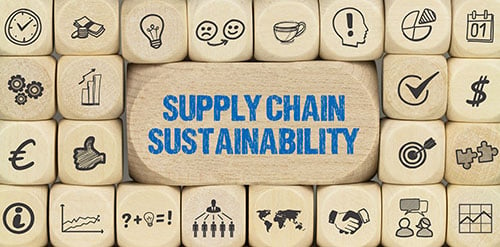
EV expert Brian Engle says we are in the midst of a new era of supply chain management, one of reducing dependencies and vertically integrating your manufacturing process. As business development director, electrification for Amphenol’s Advanced Sensor group, and president of NAATBatt, Engle provides insight on what AIAG members can do to make their supply chain less vulnerable.
If you’d like to hear more, register for the AIAG 2024 Supply Chain Conference scheduled for June 20th at the Motor City Hotel & Casino in Detroit, where Engle will be giving a presentation titled “Transformation to EV Vehicles — A Look Beyond 2024.”
AIAG: What do suppliers need to be focusing on right now?
Engle: One focus is certainly scope 3 emissions, which are logistics and transport materials, as well as the EU battery directive on battery sustainability and how it’s going to influence purchasing decisions going forward. We are finding that a number of companies’ scope 3 emissions for the movement of raw materials and finished goods and their emissions from running a heavy-duty or even medium-duty truck are rather atrocious. The U.S. is going to be implementing similar regulations to those in Europe, which means that CO(2) footprint caused by transport is going to drive decisions to look for logistics companies that can reduce their CO(2) footprint.
AIAG: How do AIAG members need to take action?
Engle: The call-to-action for AIAG members, given that a lot of them are going to be purchasing and working with trade organizations in goods movement, is to help us decarbonize the heavy-duty segment. We need to raise awareness and bring people into the fold to start pushing their transporters to use low CO(2)-emitting technologies in their transport fleet.
AIAG: What should suppliers be thinking about regarding EV batteries?
Engle: EV battery recycling. There is a big effort is to close the loop on the recycling of battery cells. People who produce new cell packs are aware of it, but we need to bring awareness to the supply chain. There are definitely challenges that we haven't figured out yet. We need to get more engagement in some of the standards committees and some of the trade organizations to help us work through these issues.
In Europe, for example, they want to prevent the leakage of any battery materials outside the region because they are so mineral poor with nickel, cobalt, manganese, and even lithium. They want to basically buy batteries, use them, and then be able to recycle that asset today so that they don't continue to be dependent over time on materials transported from other regions. It’s a new way of thinking. Their concern has been that these end-of-life batteries, in 5–10 years, basically leave the country and are re-refined into new batteries. And because they go out of Europe for this, it continues Europe’s dependency. Recycling in a region, for a region, and bringing materials back to recycling is now becoming a very big part of this discussion.
AIAG: How much of this was sparked by what happened during COVID?
Engle: COVID definitely influenced all of this. The in-region/for-region consumption and recycling to reduce the dependency on other regions is smart supply chain management, because even if everybody plays well together, the next COVID comes along, somebody has to shut down for months, and you can't make vehicles. So, the new strategy is to have less interdependence and more independence in your supply chain.
AIAG: It really is a perfect storm of circumstances driving the change, isn’t it?
Engle: For sure. Everything hit all at once — this growth in electrification, the industry would have struggled to support it even in normal times, let alone post-pandemic. Decreasing your supply chain’s dependence on other regions is a huge element in modern supply chain management.
And then vertical integration of the product itself is a third element. The manufacturers who end up dominating the electric vehicle market will be those that are vertically integrated. Tesla makes over 85% of the electronics modules used in their vehicles. They purchase the components and build the electronics modules and design their own semiconductors.
The new strategy is capturing the full value of your supply chain and not letting your profits leak to others. The whole vertical integration of the manufacturing process increases your employment, increases your profit margins, makes you a healthier company, and allows you the opportunity to treat your workers more fairly. It’s a new era and the beginning of OEMs taking responsibility for both what they design and what they build because that is where you make your money.


